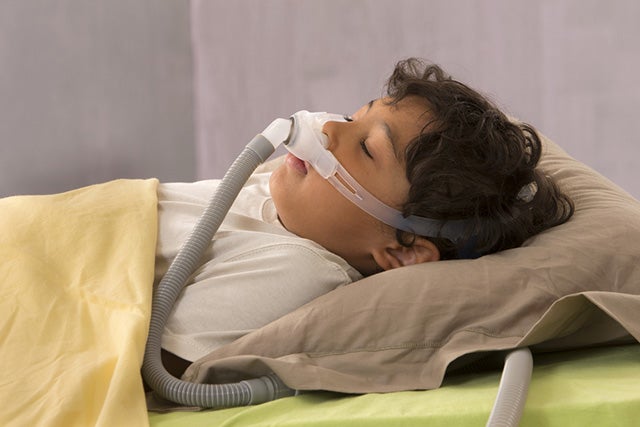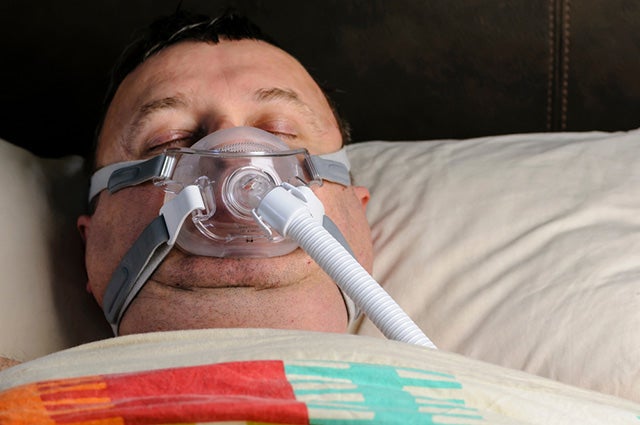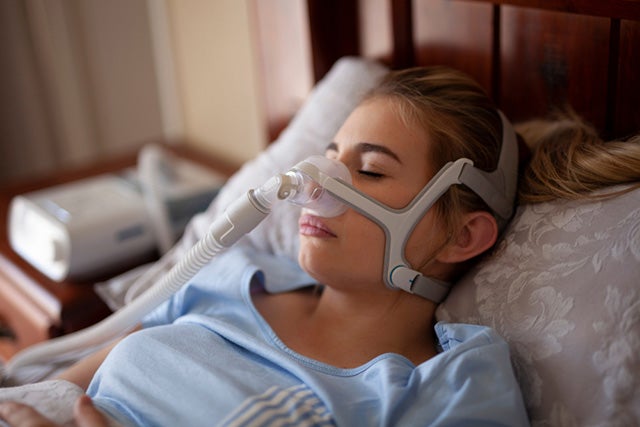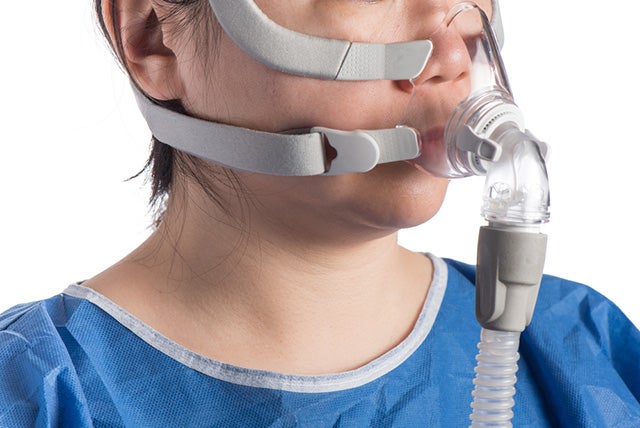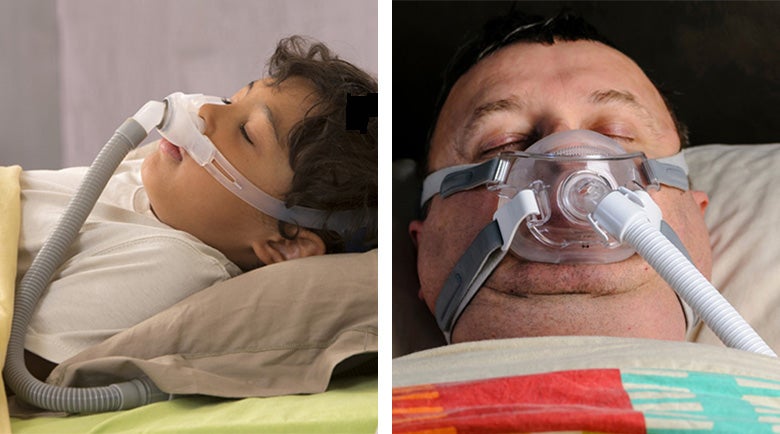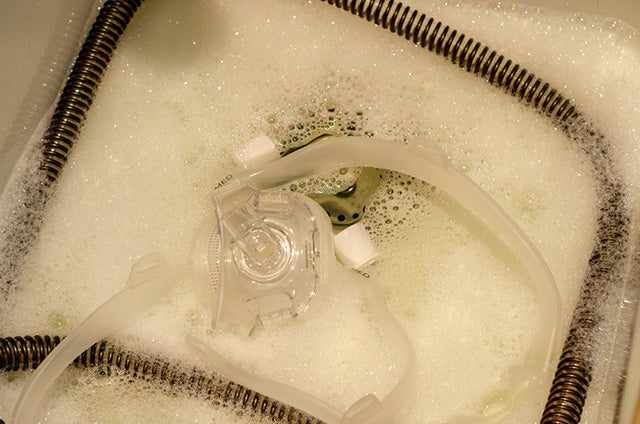Have you been diagnosed with sleep apnea and keep hearing about APAP and CPAP therapies? Do you wonder what they mean, and which is better for you? We’re going to take a closer look at APAP vs. CPAP machines and see how they compare to one another and, most importantly, who would benefit from each.
What Is an APAP Machine?
Sleep apnea is a condition in which your breathing becomes shallow or even pauses and restarts as you sleep. Often, your doctor may recommend that you begin with a device that maintains a positive airway pressure.
These gadgets deliver oxygen to your lungs and prevent your throat from closing during sleep. Automatic positive airway pressure, which is APAP for short, is one type of such device.
What Is a CPAP Machine?
The most frequently prescribed equipment for treating sleep apnea disorders is a CPAP machine (continuous positive airway pressure). While you sleep, a CPAP machine maintains a constant flow of oxygen into your mouth and nose. This maintains your airways open and enables normal breathing.
Now, he discovered, the disease was resolved using a fitting mask, some tubing, and a machine capable of producing air pressure. It was an extraordinary discovery and one that was initially viewed with suspicion.
Pros and Cons to APAP
APAP has a lot of advantages, including:
- Can help you sleep better if you have sleep apnea.
- Can help with stuffy noses and allergies.
- You don’t have to go to the doctor’s whenever you need air pressure change.
Some potential drawbacks for APAP include:
- APAP has not been extensively researched in individuals with central sleep apnea syndrome.
- Your APAP may not work properly if your mask does not fit properly or if the seal is not sufficiently tight. This can cause air leaks.
- You might not be suitable for APAP if you have a pulmonary disease or heart failure.
Pros and Cons to CPAP
Some advantages of CPAP include:
- Enhances your capacity to sleep through the night without waking up.
- May have a beneficial effect on cholesterol and blood glucose levels.
- Aids in the reduction of blood pressure.
- Decreases daytime drowsiness.
- Decreases your risk of suffering from a stroke or heart attack.
As for the drawbacks, one might expect:
- Difficulties in getting used to the mask.
- Nasal congestion.
- Dry mouth.
- The need to go to the doctor to change the settings on the machine.
APAP vs. CPAP: Let’s Compare
The primary distinction between these two machines is that an APAP machine adjusts its settings automatically while you sleep. This enables it to adjust pressure requirements during the night.
A CPAP machine is typically adjusted to a single setting through a PAP titration study either in a sleep study center or your own home or by trial and error while you’re using the machine.
If the pressure is excessively high and causes discomfort during exhaling, the CPAP machine’s settings can be adjusted, but the machine will never do so on its own.
Understanding the distinctions between these two devices can assist sleep apnea patients in collaborating with a medical practitioner to determine the best fit.
| APAP | CPAP |
|
|
— Size
APAP machines are often small and have quite a low noise output. This is important because they are more portable and are less likely to wake you up at night.
CPAP machines tend to be bulkier and noisy, especially if we’re talking about older models. You can now find CPAP machines that are smaller in size, so keep that in mind if you’re dealing with limited space.
— How It Works
APAP utilizes software to automatically alter the amount of air delivered during the night to meet your needs. For example, resting on your back can create more frequent interruptions in your breathing because it helps relax your tongue and mouth and inhibits airflow. When this occurs, APAP increases the air pressure. Your doctor will determine the appropriate maximum and lower air pressure limitations for you.
While you sleep, CPAP delivers air at a pressure high enough to keep your airway from collapsing. Pressurized air is delivered via a mask that fits over your nose and mouth. This enables you to breathe easily and sleep without waking up. The CPAP machine does not perform the function of breathing for you. You can generally breathe on your own.
— How to Use It
APAP is administered by a mask worn over the mouth. It is attached to a little device that softly inflates your throat with air. If you have uncomplicated sleep apnea, you may be able to begin using your APAP immediately after you’ve been diagnosed, without first attending a sleep center.
A CPAP machine’s compressor (motor) provides a constant stream of pressured air directed into a flexible tube via an air filter. Purified air is delivered through this tube into a mask sealed around your mouth or nose. While you sleep, the CPAP machine’s airstream pushes against any blockages, widening your airways and ensuring that your lungs receive adequate oxygen.
— Price Range
APAP machines fall on the more expensive side, as the market average revolves around $800. Insurance companies often recommend that people start using a CPAP machine (naturally, there are cases where doctors recommend APAP from the get-go).
CPAP machines are cheaper, with the market average being between $500 and $800. You are more likely to get your CPAP machine costs covered if you have a medical insurance plan.
— Cleaning
Both APAP and CPAP machines are cleaned in a similar fashion. Manufacturers and experts generally advocate daily cleaning of the components of your CPAP machine, and people who use these should commit to weekly maintenance at the very least.
There have been reports of serious diseases being traced back to unclean devices. Not cleaning your machine regularly may lead to congestion, coughing, and other symptoms of a compromised respiratory system.
Who Should Buy It?
APAP machines are mostly recommended to people who are experiencing trouble exhaling while using a CPAP machine. They are suitable for people with specific forms of sleep apnea, which is why it’s important to see a doctor for all your APAP recommendations.
CPAP machines are a good choice for people who suffer from obstructive sleep apnea. They are a common choice amongst individuals who experience sleep apnea symptoms that interfere with normal sleeping patterns.
Conclusion
When deciding between an APAP and a CPAP machine, you should visit a sleep specialist or physician to determine which machine is best for you. Finding the correct PAP machine is frequently a question of trial and error. According to the doctor’s recommendations, many patients begin with a CPAP but may switch to an APAP if the CPAP does not produce the desired results.
Photo credit: JPC-PROD/Shutterstock; Stephen Barnes/Shutterstock;
Independence_Project/Shutterstock; Rick C Lanier/Shutterstock
